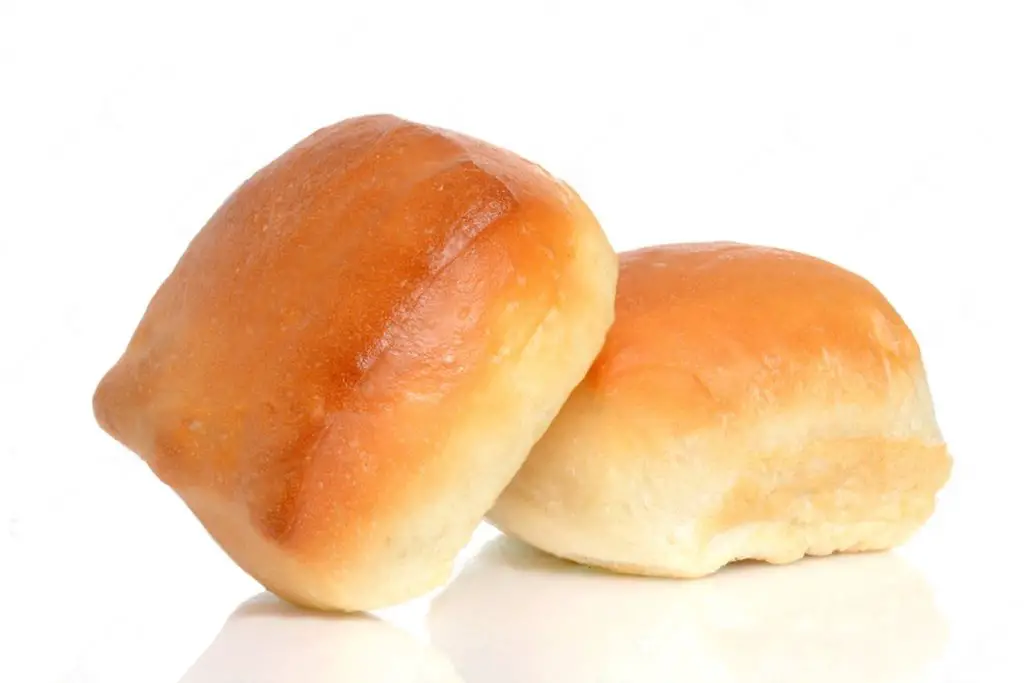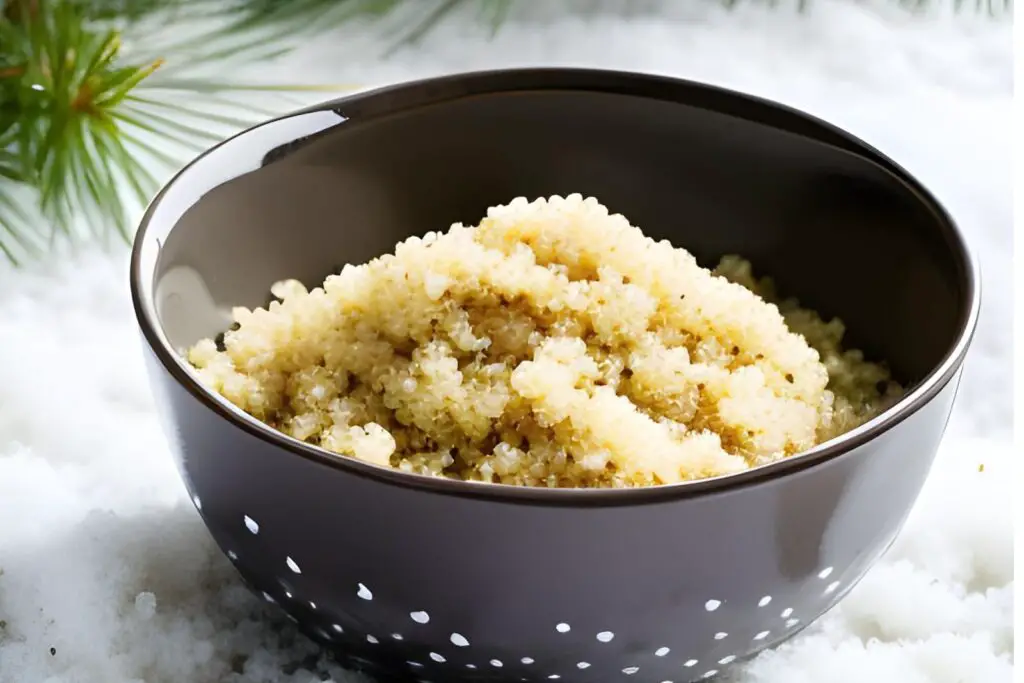
Potato croquettes are a delicious and versatile dish made from mashed potatoes that are breaded and fried until crispy. These savory treats are enjoyed by people of all ages and can be served as appetizers, side dishes, or even as a main course. If you find yourself with leftover potato croquettes or simply want to prepare them in advance, freezing is an excellent option. Freezing potato croquettes allows you to conveniently store them for future use without compromising their taste and texture. In this article, we will provide you with a step-by-step guide on how to freeze potato croquettes properly, ensuring they remain as delightful as ever when you decide to enjoy them later.
Here’s a guide on how to freeze potato croquettes:
Step 1: Prepare fresh potato croquettes
To begin the process of freezing potato croquettes, you’ll first need to prepare a batch of fresh croquettes using your preferred recipe. Making potato croquettes involves a few key steps to ensure they turn out delicious and have the right consistency.
Start by selecting high-quality potatoes, preferably starchy varieties like Russet or Yukon Gold, as they work best for creating a creamy texture. Peel the potatoes and cut them into evenly sized pieces to ensure even cooking. Place the potato pieces in a pot of salted boiling water and cook them until they are tender when pierced with a fork.
Once the potatoes are cooked, drain them well and transfer them to a large bowl. Mash the potatoes using a potato masher or a fork until they are smooth and free of lumps. It’s important to do this while the potatoes are still warm, as they are easier to mash and incorporate other ingredients.
Next, it’s time to add flavorings and seasonings to the mashed potatoes. This can vary depending on personal preference and the recipe you’re following. Common additions include melted butter, grated cheese, finely chopped herbs like parsley or chives, minced garlic, and a sprinkle of salt and pepper. Mix these ingredients thoroughly into the mashed potatoes until they are well combined.
After the flavorings are incorporated, allow the mashed potato mixture to cool completely. This step is crucial before shaping the croquettes, as warm or hot potato mixture can be difficult to handle and shape properly.
Once the mashed potatoes have cooled down, it’s time to shape them into croquettes. You can form them into cylinders, balls, or any desired shape. To do this, take a portion of the mashed potato mixture and roll it in your hands, applying gentle pressure to create a compact shape. Repeat this process with the remaining mixture until all the croquettes are formed.
To ensure that the potato croquettes hold their shape and don’t fall apart during the freezing process, it’s important to let them cool and set in the refrigerator for at least an hour. This chilling time helps the croquettes firm up and hold their shape.
Once the potato croquettes have cooled and set, they are ready to be frozen. At this stage, you can proceed to the next steps outlined in the freezing guide to preserve the croquettes for future enjoyment.
Step 2: Arrange the croquettes on a baking sheet
After preparing the fresh potato croquettes, the next step in the freezing process is to arrange them on a baking sheet. This step is crucial to ensure that the croquettes freeze individually and don’t stick together during the freezing process.
To begin, take a baking sheet and line it with parchment paper or a silicone mat. The parchment paper or silicone mat prevents the croquettes from sticking to the surface of the baking sheet, making it easier to remove them once they are frozen.
Arrange the potato croquettes on the baking sheet in a single layer, making sure they are evenly spaced and not touching each other. Leaving some space between the croquettes is essential because if they are in direct contact during freezing, they can fuse together, making it difficult to separate them later.
By arranging the croquettes in a single layer, you allow for proper airflow around each croquette during freezing. This helps in maintaining the texture and quality of the croquettes. It also ensures that each croquette freezes at the same rate, preventing uneven freezing and potential texture issues.
If you have a large batch of croquettes, you may need to use multiple baking sheets or freeze them in separate batches. This ensures that each croquette has enough space for proper freezing and avoids overcrowding.
The use of parchment paper or a silicone mat also makes it easier to transfer the frozen croquettes to containers or bags later on. You can simply lift the paper or mat with the frozen croquettes intact and transfer them without any hassle or risk of breakage.
Step 3: Pre-freeze the croquettes
After arranging the potato croquettes on the baking sheet, the next step in the freezing process is to pre-freeze them. Pre-freezing involves placing the baking sheet with the croquettes in the freezer and allowing them to partially freeze for about 1 to 2 hours. This step is essential for maintaining the shape and texture of the croquettes and preventing them from clumping together.
During the pre-freezing stage, the outer layer of the croquettes starts to freeze, forming a protective barrier. This initial freezing helps to solidify the outer surface, locking in the shape and preventing the croquettes from losing their form or merging together when stored for a longer period.
By pre-freezing the croquettes individually on the baking sheet, you ensure that each croquette maintains its distinct shape. This is particularly important for delicate or irregularly shaped croquettes that may be prone to losing their structure if not properly frozen.
Pre-freezing also reduces the risk of the croquettes sticking to each other during storage. When croquettes are placed close together before they have a chance to partially freeze, their moist surfaces can come into contact and stick together, making it difficult to separate them when it’s time to cook. Pre-freezing allows the outer layer to freeze, preventing this sticking issue and ensuring that the croquettes remain separate and intact.
The pre-freezing duration of 1 to 2 hours is generally sufficient to achieve the desired results. However, it can vary depending on factors such as the size and thickness of the croquettes, as well as the temperature and efficiency of your freezer. It’s important to monitor the croquettes during pre-freezing to avoid over-freezing, which can lead to freezer burn or a compromised texture.
Step 4: Transfer to freezer-safe containers
After the croquettes have undergone the pre-freezing stage and have partially frozen on the baking sheet, it’s time to transfer them to freezer-safe containers or resealable freezer bags. This step is crucial for protecting the croquettes from freezer burn, maintaining their quality, and ensuring easy storage and retrieval.
First, remove the baking sheet with the partially frozen croquettes from the freezer. Handle the sheet carefully to prevent any accidental breakage or damage to the croquettes.
Next, select appropriate freezer-safe containers or resealable freezer bags for storing the croquettes. It’s important to use containers or bags specifically designed for freezing because they are made of materials that are resistant to low temperatures and help maintain the quality of the frozen food.
Freezer-safe containers can be made of plastic, glass, or aluminum and should have airtight lids or seals to prevent air and moisture from entering. Resealable freezer bags are also a convenient option, as they allow for easy stacking, save space, and are designed to resist freezer burn.
Carefully transfer the partially frozen croquettes into the containers or bags, ensuring they are placed in a single layer or with minimal stacking. This helps maintain the shape and texture of the croquettes during freezing and ensures they freeze and thaw evenly.
Avoid overcrowding the containers or bags to allow for proper air circulation and minimize the risk of the croquettes sticking together. If you have a large quantity of croquettes, it may be necessary to use multiple containers or bags, dividing them into smaller batches for easier storage and future use.
Step 5: Seal the containers
Once you have transferred the partially frozen potato croquettes into freezer-safe containers or resealable bags, the next step is to ensure that these containers are tightly sealed. This is an important step in the freezing process as it helps to preserve the flavor, texture, and overall freshness of the croquettes during storage in the freezer.
Sealing the containers or bags creates a barrier that prevents air and moisture from entering. By minimizing exposure to air and moisture, you can significantly reduce the risk of freezer burn, which can negatively impact the quality of the croquettes.
Air exposure in the freezer can lead to the formation of ice crystals on the surface of the croquettes, causing them to become dry and develop an off-flavor. Moisture, on the other hand, can contribute to the loss of texture and create an environment conducive to bacterial growth.
By tightly sealing the containers or bags, you create an airtight and watertight environment, effectively protecting the croquettes from these undesirable effects. This helps to maintain their original flavor, texture, and overall quality.
When sealing the containers, ensure that the lids or seals are securely in place. If you are using resealable freezer bags, press out any excess air before closing the bag and seal it tightly. Some bags may also have a double-seal feature, which provides an added layer of protection against air and moisture.
It’s important to note that proper sealing also aids in efficient space utilization in the freezer. By removing excess air and tightly sealing the containers or bags, you can stack them neatly and maximize the available freezer space.
Step 6: Label and date the containers
After sealing the containers or bags that hold your potato croquettes, it’s important to take the additional step of labeling and dating them. This simple yet crucial step helps you keep track of the croquettes and their storage time, ensuring that you can easily identify and manage your frozen stock effectively.
Labeling the containers or bags allows you to quickly identify the contents without the need to open each one. By clearly indicating that the container or bag contains potato croquettes, you can easily locate them in your freezer and distinguish them from other frozen items.
Additionally, including the date of freezing on the label provides important information about the croquettes’ storage time. Knowing when the croquettes were frozen allows you to prioritize their consumption based on freshness. It also helps you avoid keeping them in the freezer for too long, as frozen foods are best consumed within a certain period for optimal quality.
To label the containers or bags, you can use a marker specifically designed for freezer-safe surfaces or attach adhesive labels. Write “Potato Croquettes” or a similar description clearly on each label. Also, include the date when the croquettes were frozen. You can either write the specific date or use a month and year format, depending on your preference.
Step 7: Store in the freezer
Once you have labeled and dated the containers or bags of potato croquettes, the next step is to store them in the freezer. Proper storage ensures that the croquettes remain in the best possible condition for an extended period. Here’s how to store them effectively:
Place the sealed containers or bags of potato croquettes in the freezer. Choose a spot that provides a stable and consistent temperature, preferably at 0°F (-18°C) or below. This temperature range ensures optimal food safety and helps maintain the quality of the croquettes.
Position the containers or bags in a way that allows for efficient use of freezer space. You can stack them neatly, taking care not to place excessive weight on top to avoid crushing the croquettes. Alternatively, if you have a deep freezer or multiple shelves, you can allocate separate areas for different batches of croquettes.
Consider organizing the freezer by grouping similar items together, such as placing all the potato croquettes in one section. This way, you can easily locate and access the croquettes when you need them without rummaging through the entire freezer.
Ensure that the croquettes are stored away from the freezer’s air vents or areas that are prone to temperature fluctuations. These areas may affect the freezing process and lead to inconsistent results. Additionally, keeping the croquettes away from strong-smelling foods can prevent flavor transfer.
When placing the containers or bags in the freezer, try to create a clear pathway or space that allows for easy access. This way, you can retrieve the desired amount of croquettes without disturbing the other items stored nearby.
How long can I store potato croquettes in the freezer?
Potato croquettes can be stored in the freezer for up to 3 months without significant loss in quality. However, for the best flavor and texture, it is recommended to consume them within the first 1 to 2 months of freezing. Proper storage in airtight containers or bags helps maintain their taste and texture during this period.
Other related questions
How do I defrost potato croquettes?
To defrost potato croquettes, there are two recommended methods. The first is to transfer the desired amount of croquettes from the freezer to the refrigerator and let them thaw overnight. This gradual thawing process allows the croquettes to thaw evenly while keeping them at a safe temperature. Alternatively, if you need to defrost the croquettes more quickly, you can use a microwave or oven on a low heat setting, taking care to avoid overheating or drying them out.
How should I reheat frozen potato croquettes?
To reheat frozen potato croquettes, it is best to thaw them first. Once thawed, you can either pan-fry them in a bit of oil until golden and crispy or bake them in a preheated oven at 375°F (190°C) for about 15-20 minutes until heated through. This ensures that the croquettes are warmed evenly and regain their desired texture.
Can I refreeze potato croquettes?
It is generally not recommended to refreeze potato croquettes. Once frozen croquettes have been thawed and cooked, they should be consumed promptly. Refreezing can lead to a loss of quality, as it can affect the texture and taste of the croquettes, potentially making them less enjoyable. It is advisable to only thaw and cook the amount of croquettes that will be consumed in one sitting to ensure the best culinary experience.
How do I know if the potato croquettes have gone bad after being frozen?
To determine if frozen potato croquettes have gone bad, several signs should be considered. These include a noticeable change in texture, such as becoming mushy or excessively dry, as well as the presence of off-putting odors or flavors. If the croquettes develop freezer burn, characterized by dry and discolored patches, they may also have deteriorated in quality. It is important to trust your senses and discard any frozen croquettes that exhibit these signs to ensure food safety and enjoyable consumption.
Can I freeze potato croquettes with different coatings or fillings?
Yes, you can freeze potato croquettes with various coatings or fillings. Whether they are breaded, coated in breadcrumbs, or stuffed with additional ingredients, freezing them follows the same process. Ensure they are properly cooked, cooled, and arranged in a single layer before freezing to maintain their individuality and prevent clumping together.
Can I freeze uncooked potato croquettes?
While it is possible to freeze uncooked potato croquettes, it is generally recommended to partially cook them before freezing. Pre-cooking the croquettes helps them retain their shape and texture during freezing and ensures they cook evenly when you later decide to thaw and fry them.
Can I freeze potato croquettes with sauce or dip?
While it’s possible to freeze potato croquettes with sauce or dip, it’s generally better to freeze them without the sauce. Sauces and dips can change in texture and consistency when frozen and thawed. It’s best to add the sauce or dip after reheating the croquettes to maintain their quality.
Can I freeze homemade potato croquette mixture without shaping them?
Yes, you can freeze the homemade potato croquette mixture without shaping them. Form the mixture into a flattened disc or wrap it tightly in plastic wrap, then place it in a freezer-safe container or bag. When you’re ready to make the croquettes, thaw the mixture and shape it into the desired form before frying or baking.
Are there any special considerations for gluten-free potato croquettes?
If you’re making gluten-free potato croquettes, it’s important to ensure that all the ingredients, including the breadcrumbs or coating, are gluten-free. Use gluten-free breadcrumbs or alternative coatings like crushed gluten-free crackers. Follow the same freezing process while maintaining a gluten-free environment to avoid cross-contamination.
Can I freeze potato croquettes made with sweet potatoes?
Yes, you can freeze potato croquettes made with sweet potatoes following the same freezing process. Sweet potato croquettes may have a slightly different texture compared to those made with regular potatoes, but they can be frozen and reheated in the same manner. Enjoy the unique flavors of sweet potato croquettes whenever you desire.
Can I freeze leftover store-bought potato croquettes?
Yes, you can freeze leftover store-bought potato croquettes. Place them in airtight containers or freezer bags, ensuring they are properly sealed to prevent freezer burn. Follow the same freezing and reheating instructions as with homemade croquettes for best results.








